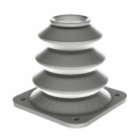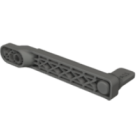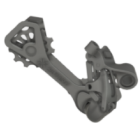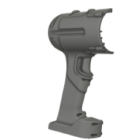Do 3D printers use a lot of electricity?
When people ask about the true costs of additive manufacturing, power consumption often comes up — and with good reason. While 3D printers don’t compare to industrial CNC machines or furnaces in terms of energy use, 3D printing power consumption can still impact your operating budget, especially in high-volume or continuous production environments.
But is it fair to say that 3D printers use a lot of electricity? The short answer is: not really — but it depends on the type of printer, the printing duration, and the materials involved.
How much electricity does a 3D printer use?
To answer this properly, we need to talk in kilowatt-hours (kWh), the unit used to calculate electricity usage on utility bills. FDM printers, the most common desktop variety, typically consume between 50 and 250 watts per hour during operation. That’s roughly 0.05 to 0.25 kWh.
So if you’re running a print job that lasts 10 hours, you’re looking at 0.5 to 2.5 kWh in total — which, depending on your local electricity rates, may cost anywhere between €0.15 to €1.00. Even professional FDM printers with heated chambers rarely exceed 500W average draw.
On the other hand, resin printers (SLA/DLP) are generally more efficient due to LED-based curing systems. SLS printers, however, especially those with industrial-sized heated chambers, can draw anywhere from 1 to 5 kWh per hour, making them more energy-intensive — but they often replace several processes in traditional manufacturing, balancing the higher consumption.
Power draw vs. print duration
It’s important to distinguish between peak power draw and total energy use. A printer may draw 400W, but if a part takes 30 hours to print, the overall cost rises even with modest wattage.
Also, printers often fluctuate in power use. Heating elements (like hotends or build plates) cycle on and off. Fans, steppers, and screens consume relatively little in comparison. With long, high-temp prints, sustained heating becomes the dominant power factor.
Comparing power use across 3D printing technologies
Here’s a simplified look at average power consumption:
| Technology | Average power use (W) | Example use case |
|---|---|---|
| FDM (desktop) | 60–250 W | Prototyping, parts, models |
| FDM (industrial) | 300–800 W | Functional parts, tooling |
| SLA / DLP | 40–150 W | Dental, jewelry, miniatures |
| SLS | 1,000–5,000 W | Production-grade parts |
| DMLS / SLM (metal) | 2,000–10,000 W | Aerospace, tooling |
As you can see, metal 3D printing power requirements are by far the highest, often necessitating dedicated industrial power lines and cooling systems.
How to estimate electricity costs for 3D printing
To calculate the 3D printing electricity cost, you’ll need:
- printer’s average wattage (W),
- duration of the print (hours),
- your local electricity rate (€ per kWh).
Example:
If you use a printer that draws 200 W for 12 hours:
0.2 kW × 12 = 2.4 kWh
At €0.30 per kWh → €0.72 total electricity cost
While this is relatively affordable, in large-scale production environments — or where prints run 24/7 — these numbers can scale significantly.
Efficiency tips for reducing power consumption
While electricity is not the biggest cost driver in most 3D printing operations, improving efficiency can help:
- turn off idle printers — standby modes still draw power.
- use insulated enclosures to retain heat,
- avoid unnecessarily high bed or chamber temperatures,
- optimize slicing settings to reduce print time,
- consider low-temp materials like PLA over ABS when heat is not essential,
Learn more: How to reduce 3D printing cost.
Final thoughts
So, how much electricity does a 3D printer use per hour? For most hobby and desktop printers, very little — often less than your average coffee maker. But as you scale up into high-temperature or large-format printing, the 3D printer power draw becomes a real line item in your cost analysis. Knowing your machine’s power requirements, choosing energy-efficient materials, and optimizing print duration can go a long way toward keeping costs under control.
If you’re planning to run a print farm or adopt large-scale industrial printers, electricity usage is a serious consideration — but for most users, 3D printing remains remarkably energy-efficient compared to traditional subtractive manufacturing.
Explore also
- How to calculate 3D printing cost?
- Factors affecting print cost
- 3D printing: in-house vs outsourcing
- Is 3D printing cost-effective for production and prototyping?
- Is buying a 3D printer worth it in 2025?
- How much is 3D printing?
- Is 3D printing profitable?
- How to reduce 3D printing cost
Related categories













